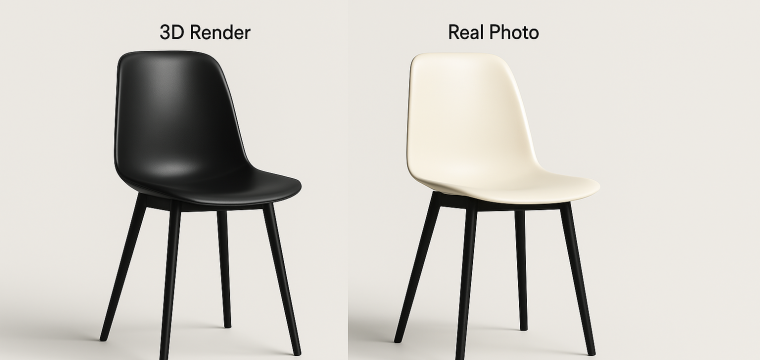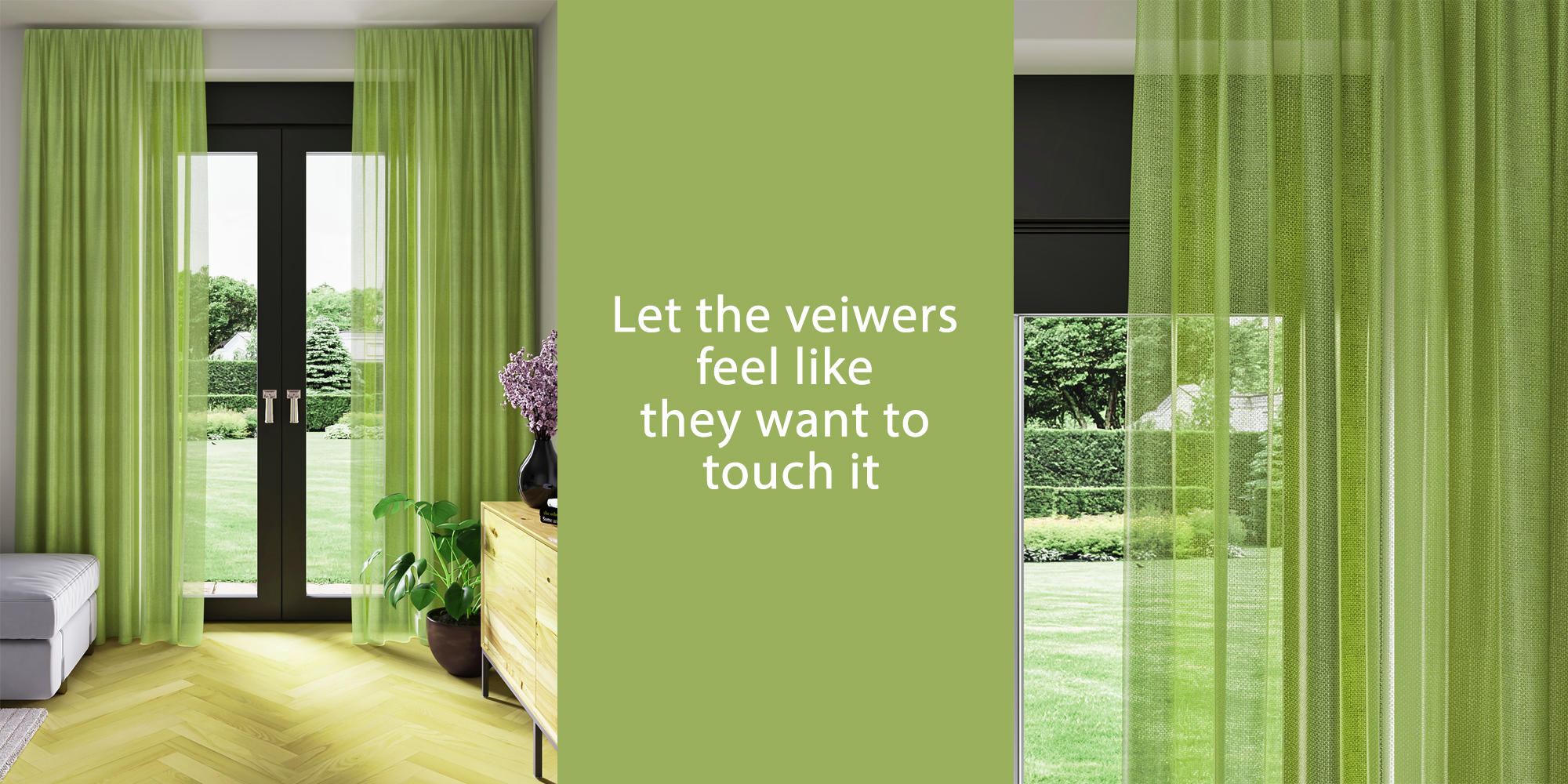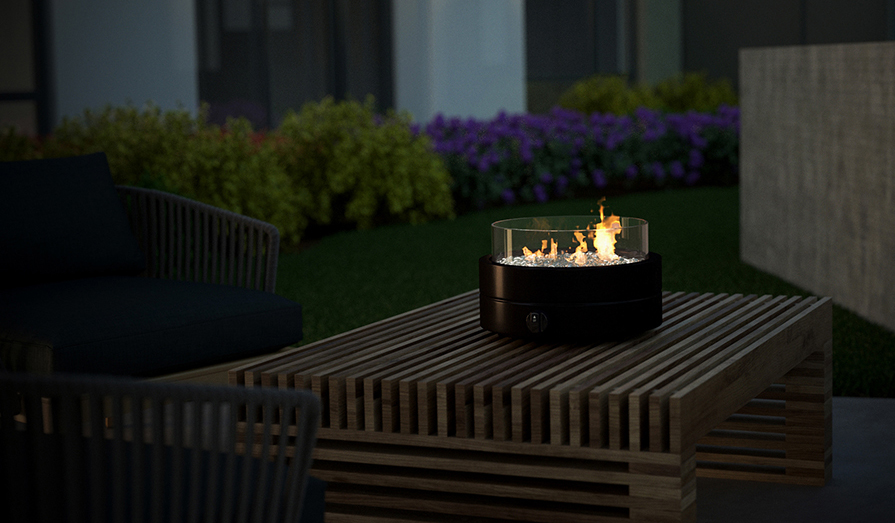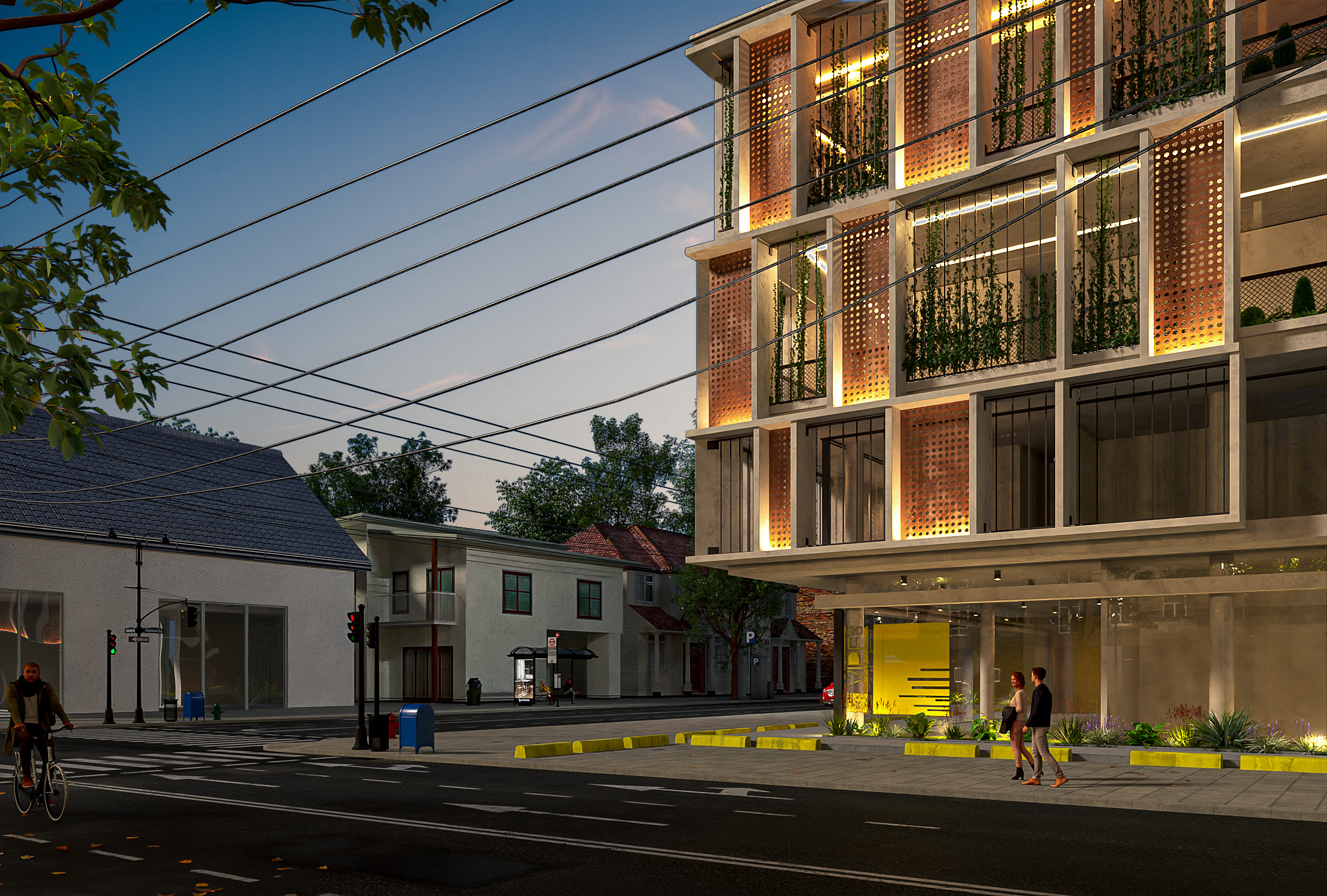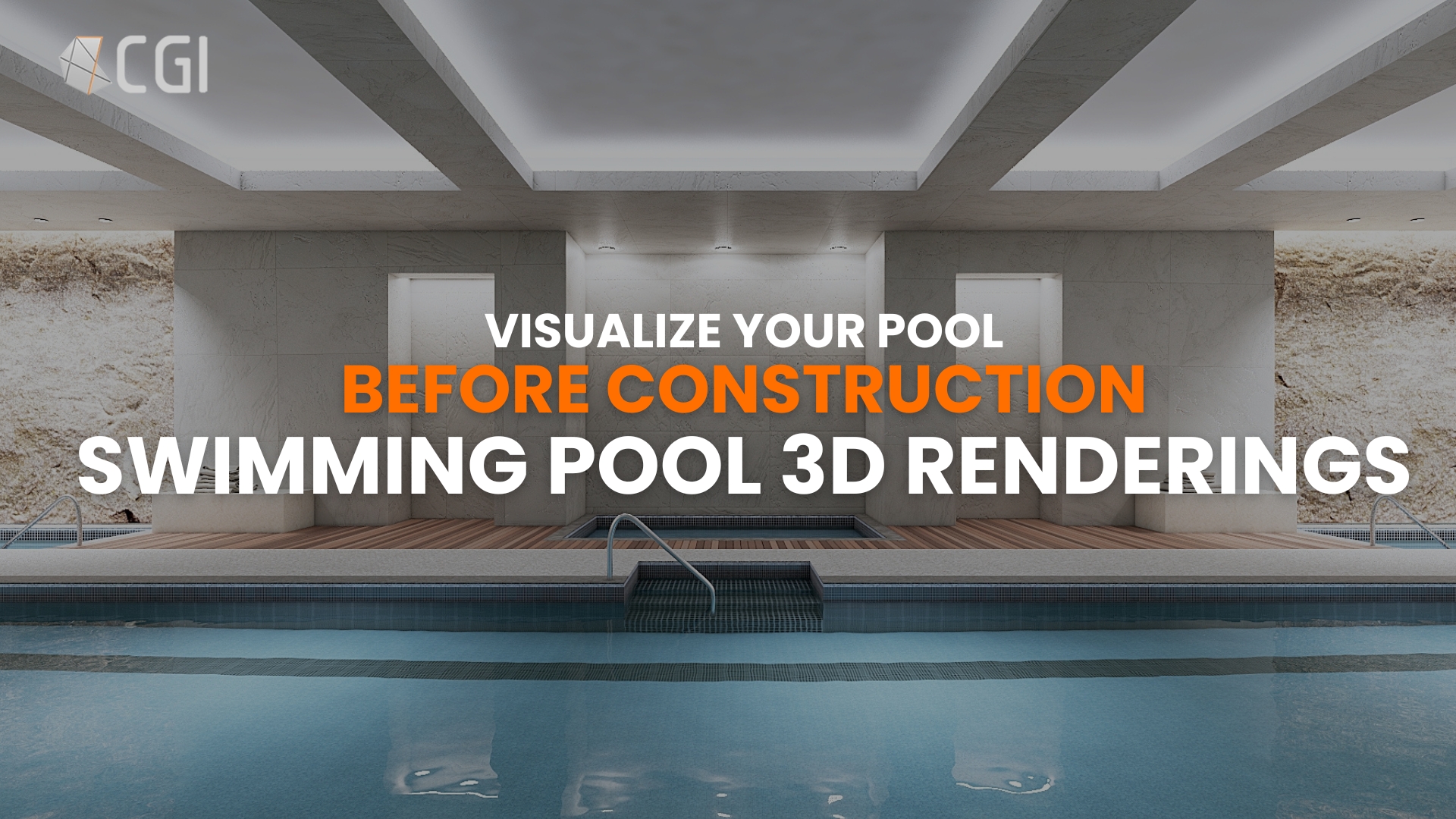Ask yourself, when you purchase a product online, from the visual aspect of that product, does 3D rendering images convert you the most? Or you’re the type of person who always looks for real product photographs?
It’s not simple to answer, right? The same goes with most people.
3D rendering images convert the most when it comes to furniture, home decor, architecture, real estate, gadgets, etc. areas. Then comes businesses that must align with customers’ emotions, tastes, authenticity, and organic POVs with real images.
You can obviously use 3D renders instead of real product photographs for some businesses. But real images do matter for many businesses.
You might have to take the hybrid approach in some cases, which you will know from this comprehensive article.
Audience Perception of 3D Rendering vs. Real Product Photography
Both 3D-rendered visuals and traditional product photography significantly influence consumer buying decisions. You might see different results depending on the business type.
For everyday items, real photos often build trust as they reflect the true appearance of a product. While 3D renders offer an interactive and detailed experience, particularly useful for tech and furniture.
Then comes the generational preference issue. Younger visitors usually convert more through 3D and AR product visualization. But with older generations, it’s all about authenticity and clarity in photos.
The product category also matters—real photos work best for groceries and clothing. Whereas, 3D renders excel for products like electronics and furniture. But, too much polish in renders can feel inauthentic.
Why 3D Rendering Images are Better than Real Product Photography
In most cases, 3D rendering images for products would take the lead. The flexibility, cost-effectiveness, precision on control, are truly unmatched if you compare with real product images.
Unlimited Reusability
Once your 3D model is created, you have the flexibility to use it for various marketing campaigns and whatnot.
Need to showcase your product in a summer campaign? Swap the background to a sunny beach. Planning a holiday promotion? Add festive lighting and snowflakes—all from the same original 3D file.
You can also use high-res renders for print catalogs, optimized versions for e-commerce, and animated spins for social media.
There’s no need to reshoot for every new angle or context.
Cost-effective – Less Resources and Logistics
Product photography isn’t only clicking pictures with a high-end camera. You need studio rentals, lighting setups, professional photographers, and often, expensive product shipping (especially for fragile items)
Then comes the post processing part – retouching, color correction, background removal, and whatnot. The more time and steps are needed, the more money you will have to spend.
3D rendering flips this model on its head. After the initial modeling investment, generating new images is virtually free. No reshoots for minor tweaks, no travel expenses, and no waiting for perfect weather conditions.
Precise Appearance Control
With real-world photography, lighting has to be just right, products must be physically flawless, and angles are limited by the camera’s position. 3D rendering removes all these constraints.
Want to showcase your product in zero gravity? Or under the neon lights of a cyberpunk city? No problem. Adjust lighting to highlight textures, tweak colors to match brand guidelines perfectly, or experiment with angles that would be impossible in a real shoot.
Every detail—from reflections to shadows—can be fine-tuned to create the exact mood and aesthetic you envision.
Easy Retouch for Adjustments
In traditional photography, even a small change (like a logo update or color variant) means scheduling another shoot.
With 3D, modifications take minutes. Swap materials, adjust finishes, or reconfigure product designs on the fly.
Selling the same chair in different fabrics? Generate dozens of variations without leaving your desk.
When your business needs A/B testing marketing visuals or anything related to catering to regional preferences, this would be invaluable.
True-to-Design Visual Prototyping
Physical samples and prototypes are expensive and time-consuming to produce. 3D rendering bridges the gap between concept and reality.
Product visualizing is revolutionary for crowdfunding campaigns, investor pitches, or pre-launch marketing.
Show your audience exactly what they’re getting—down to the stitching on a bag or the grain of wood on a table—without costly manufacturing delays. It also reduces waste, as you can perfect designs digitally before starting the production.
Industries Where 3D Rendering Images Bring Better Outcomes (With Real-World Impact)
3D rendering images do wonders in the following business niches.
E-Commerce & Retail
Imagine selling a luxury watch online. With traditional photos, you’re stuck with 5-6 flat angles.
But with 3D? Customers can spin it, zoom into the engraved serial number, or even see how it looks under different lighting—all boosting confidence (and conversions).
Case Study: A major eyewear brand replaced static product images with 3D configurators. Result? A 40% drop in returns because buyers could “try on” frames virtually.
Furniture & Home Decor
Selling a sofa? Photographs can’t show how it complements a customer’s existing décor. But 3D renders can place your product in a virtual living room. When customers can visualize their space with your furniture, the conversion rate is much higher.
Case Study: IKEA’s AR app (powered by 3D renders) lets users “place” furniture in their homes. This tech alone drove 14% higher sales for featured items.
Architecture & Real Estate
Why wait for construction to market a condo? 3D walkthroughs let buyers explore every corner of a future property, from sunset views to cabinet finishes.
With architectural 3D walkthroughs, you can visualize every detail—from ceiling heights to window placements. No longer limited to flat schematics and guessing room proportions, sightlines, and flow.
Case Study: A Dubai developer sold 70% of units off-plan using hyper-realistic 3D tours, cutting marketing costs by 60% vs. physical showrooms.
Jewelry & Luxury Goods for Every Detail
A diamond’s sparkle is impossible to capture perfectly in photos. But 3D renders simulate light refraction so accurately, buyers feel like they’re holding the piece.
Case Study: Tiffany & Co. used 3D to showcase custom engagement rings. Customers who interacted with 360° renders were 3x more likely to convert.
Factors Deciding Between 3D Rendering vs. Product Photography: How to Choose the Right Visual Strategy
Both real product images and 3D renders are a win in their own fields. Before you make the decision, you should know which option works the best for your business type and what type of customers you have to deal with.
Product Stage: Does It Physically Exist?
3D Rendering Wins When:
You’re in the prototyping phase and need to visualize a product before manufacturing.
The item is unreleased or conceptual (e.g., a futuristic gadget, unbuilt real estate).
You want to test variations (colors, materials) without producing multiple samples.
Photography Wins When:
The product is already mass-produced and readily available for shooting.
Authentic texture/details (e.g., hand-stitched leather, natural wood grain) are critical to buyer trust.
Example: A startup designing a smartwatch might use 3D renders for crowdfunding, then switch to photography once the final unit is produced.
Budget & Scalability: Short-Term Cost vs. Long-Term Savings
3D Rendering’s Edge:
High upfront cost (modeling, rigging) but cheaper long-term (no reshoots for updates).
Ideal for large catalogs (e.g., furniture with 50 fabric options—renders avoid 50 photoshoots).
Photography’s Edge:
Lower initial cost for one-off projects (e.g., a single hero product shot).
Requires ongoing spend for new angles/variants (studio time, photographer fees).
Case Study: A fashion brand saved $200K/year by rendering accessory variants instead of shooting each combo.
Creative Demands: Do You Need the Impossible?
Choose 3D For:
Fantasy scenes (e.g., a floating shampoo bottle in space).
Exploded views or cutaways to show internal mechanics.
Dynamic lighting/angles that would be impractical to photograph.
Choose Photography For:
“Real-world” authenticity (e.g., food photography where gloss/sparks are shot practically).
Emotional storytelling (lifestyle shots with human models).
Pro Tip: Nike uses hybrid approaches—3D for sneaker close-ups, photography for athlete campaigns.
Turnaround Time: Need It Yesterday?
3D’s Speed:
Edits take hours, not days (change a color in software vs. reshooting).
No delays for product availability or shipping.
Photography’s Hurdles:
Logistical delays (weather, prop availability, model schedules).
Post-processing (retouching a photo can take as long as rendering from scratch).
Example: An electronics brand used 3D to launch a global ad campaign 2 weeks faster than competitors relying on photos.
Future-Proofing: Will You Reuse These Assets?
3D’s Superpower:
Files are infinitely reusable—update for holidays, new trends, or platforms (e.g., turn a render into an AR filter).
Evergreen value: One car model can generate 100+ angles/variants over years.
Photography’s Limitation:
Static images get outdated (e.g., a phone photo loses relevance after a redesign).
Reshoots mean recurring costs.
Stats: Companies using 3D report 30% higher ROI on visual content over 3 years vs. photography.
Buyer Expectations: What Does Your Audience Trust?
3D for Tech-Savvy Shoppers:
Gen Z and millennials prefer interactive 3D/AR (e.g., spinning a product online).
Luxury buyers expect flawless, idealized visuals (renders eliminate real-world imperfections).
Photography for Traditionalists:
Audiences who value “handmade” authenticity (crafts, organic products).
Industries where “as seen” accuracy is legally required (e.g., used car marketplaces).
Trend Watch: Amazon’s 3D product spins now boost conversions by 15% vs. static photos.
The Limitations of 3D Rendering: When Pixels Can’t Replace Reality
3D rendering is not a flawless solution. Knowing its limitations would help you make informed decisions and avoid costly missteps.
Here’s where even the best digital artistry hits real-world barriers.
The “Uncanny Valley” Problem
The Issue:
Despite advances in CGI, some 3D renders fall into the uncanny valley—where a product looks almost photorealistic, but subtly “wrong.” This triggers subconscious distrust in viewers.
Where It Fails:
Organic materials like fur, fabric, or food often appear too perfect (e.g., a rendered steak lacks the juicy irregularity of a real grill mark).
Human elements (e.g., skin texture in wearable product shots) can feel artificial.
Workaround:
Hybrid approaches (e.g., photographing real textures, then digitally mapping them onto 3D models) bridge the gap.
- Hardware & Expertise Barriers: Not Everyone Can Play
The Issue:
High-end 3D rendering demands:
Powerful workstations (consumer laptops choke on complex models).
Specialized skills (a mediocre 3D artist can make a $10K product look cheap).
Real-World Impact:
Small businesses may outsource renders, losing control over iterations.
Poor optimization creates slow-loading files that kill e-commerce conversions.
Stat: 40% of users abandon sites if pages take >3 seconds to load—a risk with unoptimized 3D assets.
The “Over-Perfection” Trap
The Issue:
3D’s strength—flawless precision—can backfire for brands where authenticity matters.
Examples:
A handmade ceramic mug loses charm when rendered with mathematically perfect symmetry.
Vintage-style products look sterile without intentional “imperfections” (scratches, uneven dye).
Fix:
Art directors now brief 3D teams to add controlled “flaws” (e.g., subtle asymmetries, texture noise).
Physics Defiance: When Realism Breaks Trust
The Issue:
3D allows impossible scenarios (floating objects, gravity-defying liquids), which can undermine credibility for functional products.
Where It Backfires:
A rendered backpack shown overfilled yet weightless makes shoppers question durability.
Industrial equipment visuals that ignore real-world physics (e.g., friction, material stress) mislead buyers.
Solution:
Use 3D for stylized marketing, but pair with photography for technical documentation.
Time Sink: High-Quality Isn’t Instant
The Myth:
“3D is faster than photography.” Only if you ignore:
Modeling time: A photorealistic sneaker can take 80+ hours to perfect.
Revisions: Client feedback loops (e.g., “make the metal less shiny”) stretch timelines.
Case Study:
A watch brand delayed its launch by 6 weeks because 3D artists reworked the second hand’s motion 12 times.
Emotional Disconnect: Where Photography Still Wins
The Issue:
3D struggles to replicate the emotional resonance of:
Human-centric shots (e.g., a mother’s hands cradling a baby product).
Authentic moments (steam rising from coffee, a wrinkled shirt’s lived-in feel).
Data Point:
Lifestyle photography still outperforms 3D in ads for baby/pet products by ~22% engagement (Meta 2023 study).
Legal Gray Areas: The “False Advertising” Risk
The Issue:
Over-polished 3D visuals have triggered lawsuits for misrepresentation, especially in:
Real estate (rendered sunset views blocked by unmodeled buildings).
E-commerce (product colors/sizes differing from renders).
Prevention:
Regions like the EU now require disclaimers (e.g., “3D simulated image”) for certain industries.
Strategic Takeaway: Use 3D Rendering Where It Excels
These limitations aren’t dealbreakers—they’re boundaries to design around.
Final Words
In conclusion, 3D renders offer you great flexibility and creativity. This is the go-to option for prototypes, tech products, and interactive configurations.
But, real product photography is still necessary for showcasing organic materials, capturing human emotion, and meeting legal requirements.
The ideal approach is to combine real photos with 3D elements. You will be able to create engaging, authentic, and informative content that appeals to a wide range of customers.
By blending both formats, you can maximize your brand’s visual impact and meet diverse consumer needs.

